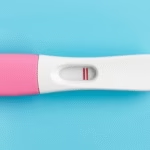Understanding Implantation Bleeding at 6 Days
When discussing implantation bleeding 6 days, it refers to light spotting that can occur around six days after conception. Implantation bleeding happens when a fertilized egg attaches itself to the lining of the uterus. This event typically occurs about a week after ovulation and fertilization, coinciding with the timing when many women might expect their menstrual cycle. While some may confuse this light spotting with an early period, it usually is lighter in color and volume, appearing as pink or brown. Understanding this distinction is critical for women trying to conceive, as it can be one of the early signs of pregnancy.
It’s essential to recognize that not all women experience implantation bleeding, and its presence does not confirm pregnancy. The main purpose of discussing implantation bleeding is to provide insight into its timing, characteristics, and what to expect if it occurs. Being aware of these details can offer clarity during a hopeful time for individuals trying to understand their reproductive health.
What is Implantation Bleeding?
Implantation bleeding is a process where the fertilized egg, now called a blastocyst, attaches to the uterine lining. This process can cause minor bleeding due to the disruption in the blood vessels during the implantation. The bleeding is generally light, lasting from a few hours to a couple of days and is often not accompanied by any significant cramps, unlike menstrual periods. Recognizing this form of bleeding can be crucial as it sometimes signals the onset of pregnancy.
Symptoms may include the following:
- Light spotting
- Pink or brown discharge
- Short duration of bleeding
- No heavy flow or clotting
If a woman experiences heavy bleeding or severe pain, it is advisable to consult with a healthcare professional, as it may indicate complications. Understanding these symptoms can help in identifying whether it is implantation bleeding or an early menstrual cycle.
Timing and Symptoms: When to Expect Implantation Bleeding
For women trying to conceive, understanding the timing of implantation bleeding is vital. Generally, upon ovulation, if the egg is fertilized by a sperm, it begins its journey toward the uterus. This journey takes about six to ten days, during which time it develops and becomes a blastocyst. Around six days after fertilization, the blastocyst embeds itself into the uterine lining, which typically corresponds with potential spotting.
Women may notice symptoms during this time, which can include:
- Spotting that differs in color from the usual menstrual blood
- Minimal or no cramping
- A sense of heightened awareness regarding their cycle
Recognizing these symptoms can empower women to take appropriate steps towards confirming pregnancy with a test when overdue on their period. If implantation bleeding occurs without any additional concerning symptoms, it is often viewed positively as a potential sign of pregnancy.
Differences Between Implantation Bleeding and Menstrual Period
Understanding the differences between implantation bleeding and a menstrual period is crucial for accurate self-assessment. While both can involve some degree of bleeding, key distinctions exist:
- Color: Implantation bleeding is usually lighter in color, often pink or brown, while menstrual blood is often a bright red.
- Flow: The flow during implantation is typically scant and lasts only hours to a couple of days. A regular period tends to involve heavier bleeding and lasts longer.
- Cramps: Cramping might occur during implantation but is usually less intense compared to the cramping associated with menstrual cycles.
- Timing: Implantation bleeding occurs roughly a week before the expected period; menstrual bleeding follows a more regular cycle.
Being able to distinguish these two types of bleeding can help prevent unnecessary panic or excitement. Keeping track of one’s menstrual cycle, including any unusual symptoms, can lead to a better understanding of one’s reproductive health and conditions.
Can Menstrual Cycle Affect Implantation Bleeding?
The menstrual cycle plays a significant role in implantation bleeding as it dictates the timing of ovulation and, consequently, the potential for fertilization and implantation. Variations in cycle length can affect how soon a woman may experience implantation bleeding post-ovulation. Women with shorter cycles might expect earlier implantation than those with longer cycles.
Various factors, including stress, diet, and hormonal changes, can impact the regularity of the menstrual cycle. Any changes could potentially alter the expected timing of ovulation and, thus, the likelihood and timing of implantation bleeding. Keeping a log of menstrual and ovulatory patterns can help women be more aware of any unusual changes concerning their health.
The Role of Hormones in Implantation Bleeding
Hormones such as progesterone and estrogen play a significant part in preparing the uterine lining for implantation. After fertilization, the body prepares for a possible pregnancy by regulating these hormones. High levels of progesterone promote a thicker, nutrient-rich uterine lining conducive for implantation.
The surge in these hormones can also impact other symptoms experienced around the time of implantation bleeding. Many women report symptoms like mood swings, bloating, and tender breasts due to hormonal fluctuations. Awareness of these hormonal influences can help inform women about what their bodies might undergo during this crucial phase.
What to Do if You Experience Implantation Bleeding
Experiencing implantation bleeding can be both exciting and confusing for women trying to conceive. Here are some steps to consider:
- Monitor the bleeding: Keep track of the color, flow, and duration of the bleeding. This observational log will help determine if it aligns with typical implantation bleeding.
- Maintain a diary: Record any additional symptoms like cramping or changes in mood, giving a fuller picture to discuss with a healthcare professional.
- Take a pregnancy test: If your period does not arrive as expected, consider taking a home pregnancy test for confirmation.
- Consult a healthcare provider: If you have concerns about heavy bleeding or severe pain, seek medical advice immediately.
Taking a proactive approach can help women feel empowered and informed about their reproductive health during this uncertain yet hopeful time.
Final Thoughts
In summary, understanding everything about implantation bleeding 6 days is essential for women who are trying to conceive. Recognizing the characteristics, timing, and differences compared to menstrual bleeding can provide clarity and reassurance. It’s important to keep track of any symptoms and changes in your cycle to navigate this period effectively.
In a time filled with anticipation and hope, being educated about what to expect can alleviate anxiety. If you experience any unusual symptoms or uncertainties, there is no harm in reaching out to a medical professional for advice. Taking these steps can help validate your experience and provide clarity regarding your reproductive health.
As always, staying informed and connected with one’s body is crucial for making educated decisions regarding your health.
Frequently Asked Questions
- What does implantation bleeding look like? Implantation bleeding typically appears as light pink or brown spotting, much lighter than normal menstrual flow.
- How long does implantation bleeding last? Implantation bleeding generally lasts a few hours to a maximum of two days.
- Is implantation bleeding accompanied by cramps? Some women experience mild cramping with implantation bleeding, but it is usually less intense than menstrual cramps.
- Can I take a pregnancy test during implantation bleeding? Yes, if your period is late or the implantation bleeding occurs, you can take a pregnancy test, though waiting a few days may yield more accurate results.
- What should I do if I experience heavy bleeding? If you experience heavy bleeding or severe pain, it is crucial to consult a healthcare professional as it may indicate a concern.
Further Reading
What Type of Psychotherapy Is Best for Anxiety?







